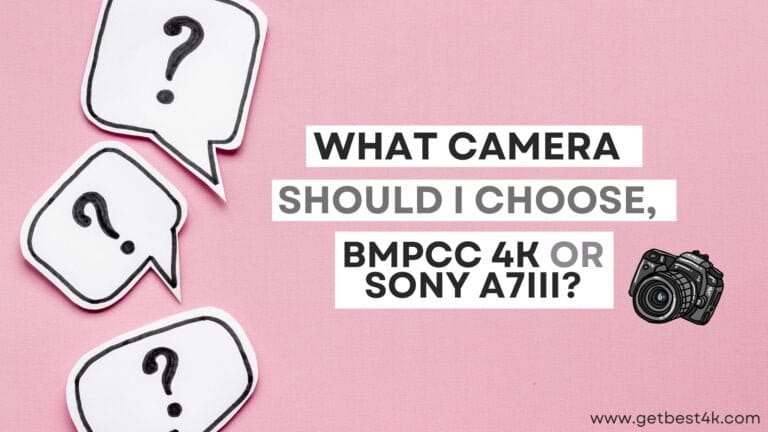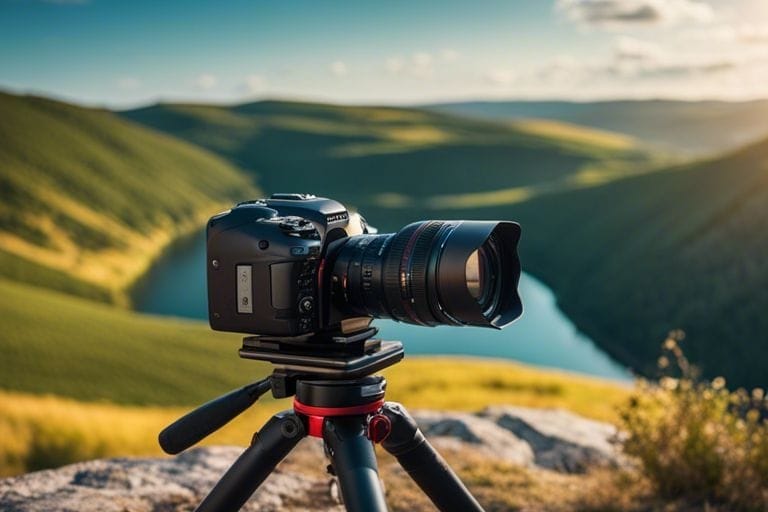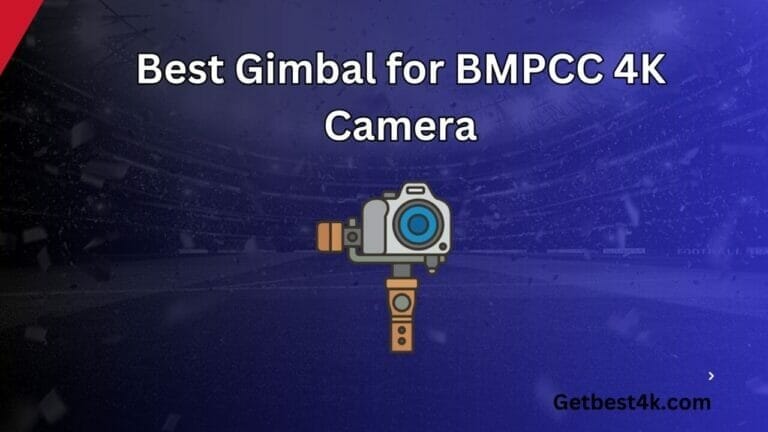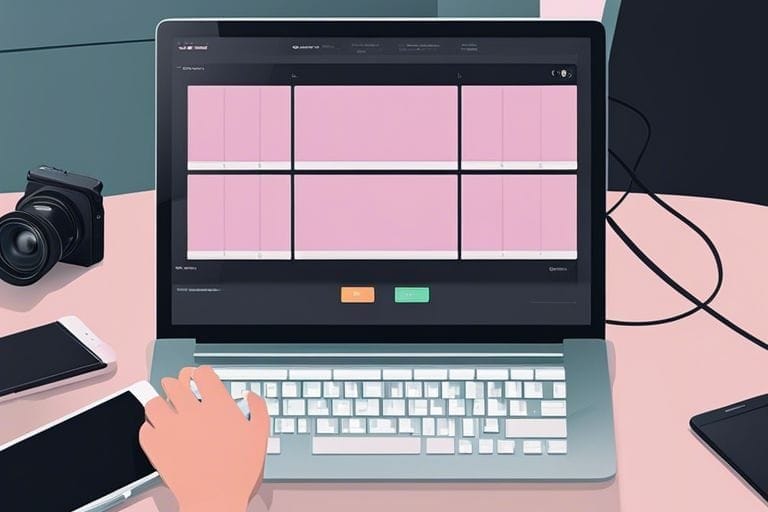How to Use the BMPCC 4K as a Webcam – Step By Step Guide
The COVID-19 pandemic has led to a huge increase in people working and socializing remotely via video calls. Platforms like Zoom, Skype, and Google Meet have become essential tools for everything from business meetings to classroom learning to staying in touch with friends and family.
With video calls now a regular part of our lives, many people are looking to upgrade from their laptop’s built-in webcam to a dedicated webcam for improved video quality. But even high-end consumer webcams have limitations in terms of video resolution, low-light performance, and overall image quality.
That’s why some people are now turning to professional cameras like the Blackmagic Pocket Cinema Camera 4K (BMPCC 4K) as a webcam replacement. With its large Four Thirds sensor, RAW recording, and extensive video controls, the BMPCC 4K takes webcam quality to another level entirely.

Introduce BMPCC 4K as a professional camera option for webcam use
The BMPCC 4K was released in 2018 as a compact, affordable 4K cinema camera aimed at independent filmmakers and videographers. Despite its portable size, the BMPCC 4K packs impressive professional video specs:
- 13 stops of dynamic range
- Dual native ISO up to 25,600
- 12MP Four-Thirds sensor
- 4K 60fps, 2.8K 80fps video
- RAW and ProRes recording
- 5″ touchscreen display
With an EF lens mount, the BMPCC 4K works with a huge array of high-quality lenses. It also has professional connections like a full-size HDMI port. All this makes the BMPCC 4K an incredibly capable camera that can rival more expensive cinema cameras.
While designed for filming, the BMPCC 4K’s outstanding image quality makes it an ideal option to use as a webcam. It provides a major upgrade over even premium consumer webcams.
Note benefits of using BMPCC 4K as webcam over regular webcams
There are several key benefits to using the BMPCC 4K as a webcam:
- Significantly higher video resolution and frame rates than a typical webcam
- Ability to output clean 4K video over HDMI at up to 60fps
- Greater dynamic range and low-light performance
- Higher quality lens options for improved image sharpness
- More control over focus, exposure, white balance, and color
- RAW video support for maximum post-processing flexibility
- Monitor with focus peaking, zebras, LUTs, and scopes via the 5″ touchscreen
For situations like important video calls, livestreams, or remote teaching, the BMPCC 4K provides a major boost in production value and flexibility over a basic webcam.
What You Need
Blackmagic Pocket Cinema Camera 4K
Obviously, you’ll need the BMPCC 4K camera itself. Current pricing is around $1,295 for the body only. There are sometimes deals on used or refurbished units as well.
Micro HDMI to HDMI cable
To get the video signal out of the BMPCC 4K, you’ll need an HDMI cable. A micro HDMI to full-size HDMI cable is the best choice.
HDMI capture device/converter
This device will take the HDMI output from the camera and convert it to a USB webcam feed for your computer. Some options are:
- Elgato Cam Link 4K
- Magewell USB Capture HDMI
- Blackmagic Design UltraStudio
Tripod with 1/4″-20 mount
To position and support the BMPCC 4K, a sturdy tripod with a 1/4″-20 threaded mount is recommended. This allows you to securely mount the camera and adjust its positioning.
Computer with video calling software
You’ll need a computer with software capable of video calls such as Zoom, Skype, Google Meet, etc. This will utilize the BMPCC 4K as your webcam.
Setting Up the Camera
Steps to mount camera on tripod and connect HDMI cable
First, securely mount your BMPCC 4K to the tripod using the 1/4″-20 threaded hole on the bottom. Extend the tripod legs so the camera is positioned at an appropriate height for your setup.
Connect the micro HDMI end of the cable to the full-size HDMI port on the BMPCC 4K. Connect the other end to your HDMI capture device’s input.
Connecting capture device to computer USB port
Plug your HDMI capture device into an available USB 3.0 port on your computer using the supplied USB cable. This will provide signal connectivity and power to the device.
Powering on camera and setting to video mode
Turn on the BMPCC 4K using the power switch, then tap on the display to access the menu. Select the video mode you want – 1080p 60fps is recommended. The camera will output this feed over HDMI.
Adjusting exposure, focus, white balance
Use the BMPCC 4K’s controls to properly expose your shot and adjust focus and white balance as needed. The touchscreen makes adjustments convenient. Set exposure to properly light yourself.
Connecting Camera as Webcam
Installing software drivers for capture device
If your HDMI capture device requires any special drivers or software, install them on your computer first. This allows your system to recognize the device.
Launching video calling software
Open up the video calling app you want to use, such as Zoom, Skype, etc. This will be the interface for your video calls.
Selecting capture device as webcam input source
Within your video app’s settings, choose the HDMI capture device as your video/webcam source rather than your built-in webcam. This feeds the BMPCC 4K’s signal into the app.
Adjusting webcam settings
You can adjust your camera resolution, frame rates, and other settings in the app’s webcam settings. 1080p 30fps is a good starting point. The clean HDMI from the BMPCC 4K allows high quality video.
Testing camera feed and making adjustments
With the BMPCC 4K now acting as your webcam, test it out! Frame your shot, check your lighting, and make any necessary adjustments to settings on both the camera and computer to optimize quality and performance. You may need to tweak things like exposure, focus, and white balance on the BMPCC 4K.
Lighting and Audio Considerations
Adding lighting to properly expose yourself on camera
Proper lighting is key to getting a good image with the BMPCC 4K. Add some dedicated lighting like softboxes or LED panels to provide flattering illumination on yourself. Position lights out of frame but aimed at you.
Positioning light sources flatteringly if needed
Pay attention to lighting direction and quality. Side lighting can sculpt and flatter facial features. Diffused lighting minimizes harsh shadows. Adjust lights as needed to get appealing results.
Using lavalier mic for best audio quality if needed
The BMPCC 4K has a built-in mic but for professional results, consider adding a lavalier mic. Clip this mic to your clothing, connect it to the BMPCC 4K’s audio input, and adjust levels as needed. This gives clear voice pickup.
Framing Your Shot
Adjusting tripod height to eye level
Position the tripod so the BMPCC 4K is around eye level. This provides a natural, straight-on angle for video calls. Adjust the tripod and legs to fine tune height.
Using autofocus or setting manual focus mark on lens
If your lens has autofocus, enable it on the BMPCC 4K for easy focusing. Or, set focus manually by rotating the lens barrel and using focus peaking on the camera’s display to dial it in.
Framing yourself in shot; checking edges of frame
Frame up your shot in the BMPCC 4K’s display. Position yourself appropriately, leaving some space around the edges. Use guide lines if needed. Check the framing and tweak camera position until you are framed correctly.
Advanced Settings and Features
Utilizing camera settings like focus peaking, zebras, LUTs
Take advantage of the BMPCC 4K’s pro features like focus peaking for precise manual focus and zebra stripes to gauge exposure. Load custom LUTs for unique color looks.
Connecting external monitor to preview shot
For a larger preview of your framing and focus, attach an external monitor like the Blackmagic Video Assist via HDMI. Position it so you can see the shot while recording.
Using camera on gimbal for dynamic video calls
Mounting the BMPCC 4K on a gimbal like the DJI RS2 gives you the ability to pan, tilt, and swivel the camera smoothly during calls for added production value.
Adding accessories like matte box, filters, remote control
Beef up your webcam setup with a matte box and filters, a wireless follow focus, or a Bluetooth remote to control the camera from your smartphone or tablet.
Conclusion
Recapping benefits and process of using BMPCC 4K as a webcam
To recap, the Blackmagic Pocket Cinema Camera 4K makes for an incredible webcam thanks to its professional video specs and output. With some supporting gear like an HDMI converter, you can connect it to your computer and utilize the BMPCC 4K’s image quality for truly pro-level video calls and livestreams.
Noting additional creative possibilities with a pro camera
The robust feature set of the BMPCC 4K means there’s a ton of creative potential to explore as well. You can really customize and craft your webcam presence with cinematic camera controls and capabilities that far exceed a basic webcam.
Suggesting ideas for taking production value higher
To take things even further, you could add pro lighting, audio equipment, and accessories to transform your webcam setup into an incredibly professional live streaming or video call rig. Some ideas include using the BMPCC 4K on a motorized gimbal for dynamic motion, adding a teleprompter for perfectly scripted presentations,
using multiple camera angles with a video switcher, or even integrating green screen capabilities for custom virtual backgrounds. The sky’s the limit! With the right gear, setup, and a bit of practice, the Blackmagic Pocket Cinema Camera 4K is capable of streaming and video call production value on par with a TV studio.
It demonstrates how with a professional cinema camera, consumer webcam technology can essentially be bypassed in favor of far superior quality and creative control. So for anyone looking to seriously upgrade their live streaming, video calls, or remote teaching camera presence, the BMPCC 4K is an ideal option worth considering.
FAQ
How do I connect my BMPCC 4K to my computer as a webcam?
To use the BMPCC 4K as a webcam, you will need to connect it to your computer via a USB-C cable. Here are the steps:
- Turn on your BMPCC 4K and plug it into your computer using a USB-C cable.
- Open your camera settings and set the USB Mode to “Mass Storage” mode. This will allow your computer to recognize the BMPCC 4K as an external USB device.
- In your computer’s settings, the BMPCC 4K should now show up as a “USB Video Device”. Select that as your webcam input source.
- You may need to install any required USB drivers for your operating system to fully recognize the BMPCC 4K. Check the manufacturer’s website for details.
- Your BMPCC 4K is now connected and should be selectable as a webcam input. Make sure to adjust any settings like resolution in your webcam software.
What software do I need to use the BMPCC 4K as a webcam?
You will need a third party software to utilize the BMPCC 4K as a webcam. The camera does not work natively as a webcam without software. Some options are:
- OBS Studio – Free and open source software for live streaming and recording. Allows you to fully utilize the BMPCC 4K as a webcam input source.
- SparkoCam – Paid software but offers advanced features like effects, filters, and more for webcam use. Recognizes the BMPCC 4K as a webcam input.
- Ecamm Live – Paid Mac software alternative to OBS Studio with emphasis on easy webcam use. Can use BMPCC 4K as an input.
- Snap Camera – Free software from Snapchat that includes filters, lenses and effects. BMPCC 4K works as a webcam input.
So in summary, OBS Studio is the most popular free option, while SparkoCam and Ecamm Live offer more advanced features at a cost.
What settings do I need to adjust on the BMPCC 4K to get the best image quality as a webcam?
Here are some key settings to adjust in your BMPCC 4K’s camera menus and settings to optimize it for webcam streaming/recording:
- Set Resolution to 1920×1080 or 1280×720 for best results. Higher resolutions may not work.
- Set Frame Rate to 30fps or 60fps. Higher rates will require more bandwidth.
- Set Bitrate between 3-10 Mbps for ideal quality. Webcam software may compress this.
- Set Format to Constant Bitrate. This looks best for live video.
- Set Sharpness between 50-100% depending on preference.
- Turn off video stabilization if enabled. This will cause cropping.
- Set Focus to manual and adjust scene if needed. Autofocus can hunt.
- Set Exposure/ISO to manual and lock dial to prevent changes.
- Set White Balance to match lighting conditions. Daylight, Tungsten, etc.
How can I get my BMPCC 4K to be recognized as a webcam on my computer?
To get your computer to recognize the BMPCC 4K as a webcam input source, follow these tips:
- Connect the BMPCC 4K via USB and set USB mode to “Mass Storage” in camera menus.
- Install any required USB/camera drivers for your operating system if needed.
- In your webcam software or computer settings, select the “USB Video Device” option that corresponds to your camera.
- If not automatically detected, you may need to manually add it as a video input source in your webcam software.
- Try disconnecting and reconnecting the USB cable, or changing the USB port used if not recognized.
- On Mac, you may need to grant permission/access to the camera in your System Preferences.
- Reboot your computer and camera if still not detected. Check for firmware updates.
- Make sure no other programs are accessing or blocking the camera input signal on your computer.
What kind of video and audio quality can I expect when using the BMPCC 4K as a webcam compared to a regular webcam?
The BMPCC 4K will provide significantly better video and audio quality compared to a regular webcam due to its large image sensor and advanced recording capabilities.
- Video quality can match DSLR or camcorder quality with sharp, high-resolution 1080p or 720p footage at high bitrates.
- Dynamic range and low light performance will be dramatically better than a basic webcam.
- You have full manual control over focus, exposure, color, and other settings for optimal image tuning.
- Audio will also be superior quality depending on your microphone setup, with support for XLR inputs.
- Footage will have a cinematic look with filmic ProRes and Blackmagic RAW options.
The main tradeoff is requiring more setup and tweaking compared to a basic plug-and-play webcam. But the BMPCC 4K can deliver excellent production quality live streaming when configured properly as a webcam.
- All About Hareem Shah: Age, Income, Height, and More - May 6, 2024
- GTUOXIES 110-inch 4K UHD Smart TV Review - March 30, 2024
- Review of SAMSUNG 98-Inch Neo QLED 4K UHD TV - March 30, 2024






